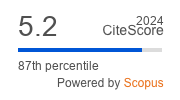Article | Open Access
The Problem of Fit in Flood Risk Governance: Regulative, Normative, and Cultural-Cognitive Deliberations
| Views: | 2615 | | | Downloads: | 1482 |
Abstract: Flood risk is a growing global concern that is not only affecting developing countries, but also the sustainable development of the most affluent liberal democracies. This has attracted attention to the systems governing flood risk across administrative levels, which vary between countries, but are relatively similar in the Nordic region, with both responsibilities and resources largely decentralized to the municipal level. However, floods tend not to be bounded by conventional borders but demand attention to the catchment area as a whole. Influential voices have long argued the importance of fit between the biophysical basis of an issue and the institutional arrangements of actors engaging in its governance. The article investigates such institutional fit in flood risk governance, based on a case study of flood risk mitigation in the Höje Å catchment area in Southern Sweden. Analyzing a unique dataset comprising 217 interviews with all individual formal actors actively engaged in flood risk mitigation in the catchment area illuminates a ‘problem of fit’ between the hydrological system behind flood risk and the institutional arrangements of its governance. This ‘problem of fit’ is not only visible along the borders of the municipalities composing the catchment area, but also of the spatial planning areas within them. The article deliberates on regulative, normative, and cultural-cognitive elements that align to lock flood risk governance into a regime of practices that, if not addressed, continues to undermine society’s ability to anticipate and adapt to the expected escalation of flood risk in a changing climate.
Keywords: flood risk; governance; governmentalization; institutional fit; institutionalism; mitigation; problem of fit; Sweden
Published:
© Per Becker. This is an open access article distributed under the terms of the Creative Commons Attribution 4.0 license (http://creativecommons.org/licenses/by/4.0), which permits any use, distribution, and reproduction of the work without further permission provided the original author(s) and source are credited.


